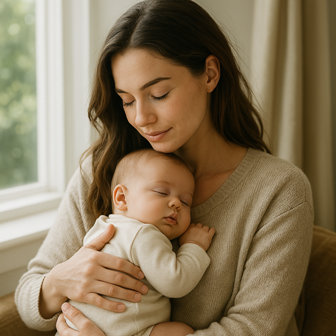How Marriage Evolved: From Basic Survival to a Lifelong Commitment
Introduction
To understand how marriage evolved, we must begin at the dawn of human life and trace its transformation through millennia. Like every other organism on Earth, we are born with innate reproductive qualities designed to ensure the continuity of our species. Yet, our human biology and social structures are unique, resulting in an institution as complex as marriage.
The Biological and Evolutionary Foundations
Reproduction in the Animal Kingdom
In the natural world, many organisms mature quickly. For instance, cows give birth, calf stand on their feet within hours, and begin to thrive rapidly. In contrast, human children take much longer to develop. Our babies generally require 11 months before they can stand, two years to start talking, and at least 8–10 years to gain basic self-sufficiency. In a traditional society—prior to the modern demands of extended education and employment—this prolonged period of dependency placed significant pressure on early human communities.
The Necessity of Partnership
Since human infants need long-term care, early women recognized the importance of having consistent support in raising a child. Over countless generations, it became clear that the biological father, who contributed to the child’s existence, could also stand as a permanent partner in that upbringing. This practical solution gave rise to a living arrangement now known by many names—marriage, निकाह, शादी—across various languages and cultures.
Marriage as a Social Institution
Life-Long Partnership and Family Formation
Marriage originated as a structure to stabilize the upbringing of children. Early unions were based on practicality—a shared responsibility between two partners where the mother stayed home to nurture and protect the child while the father provided food for the family. This division of labor ensured the child's well-being and survival and gradually evolved into a cherished tradition.
Choosing the Right Partner
Given the long period of dependency, early women eventually sought more than just a caregiver—they wanted a partner with whom they could connect emotionally, mentally, and physically. The wisdom of elders in the community soon guided young couples in partner selection, a practice that persists today. When both partners feel a genuine connection, the union becomes more harmonious and fruitful.
Evolving Gender Roles and Work Division
Historically, the natural division of roles was clear: the woman, closely bonded with the child, managed the home, while the man ventured out to gather food. This pattern endures in many parts of the world even today, with a large percentage of women staying at home to tend to family needs, and fewer venturing out to earn a living.
Marriage in the 21st Century: New Challenges and Reflections
Contemporary Complexities
While the early purpose of marriage was straightforward—the joint raising of children—it has become a more intricate institution in modern society. Today, many view marriage as entangled with social status, economic interests, and sometimes even greed. Fraud and other dubious practices can tarnish its sanctity, leading to disillusionment with the institution.
Ground Rules for a Successful Marriage
In modern times, several fundamental truths remain as guiding principles:
- Mutual Need and Equality:
Marriage is a need for both partners. It is not an act of favor or charity. When a woman leaves her father’s home to marry, it does not signify that her family is incapable of supporting her; it reflects a long-standing tradition. Neither party is superior, and mutual respect is essential. - Respecting Traditions and Individuality:
Each family and culture has its traditions. However, young couples must be given the space to develop their unique bond. For a successful marriage, both partners—and their families—must respect each other’s traditions while forging a new, shared path. Emotional connection should naturally lead to mutual care rather than being imposed by archaic customs. - Financial Prudence in Celebrations:
In an age marked by high divorce rates, excessive spending on wedding celebrations might not be the wisest investment. Simple, meaningful ceremonies that focus on genuine commitment rather than extravagance can help lay a strong foundation for the future. - Acknowledging Modern Realities:
In today’s world, not everyone marries the one they love immediately, and many choose to remain single by choice. As per modern laws, a person can be married to only one partner at a time, and divorce is sometimes necessary to reconcile differences. Yet, the ideal remains: marriage should be a lifelong commitment, a union of souls rather than merely a legal contract.
A Vision for the Future
If couples could place genuine love and mutual respect at the center of their unions—without the pressures of unfounded traditions—the rate of marital discord might decrease significantly. True love, after all, is not about imposing dominance or scrambling under the weight of outdated expectations; it is about nurturing a deep, unbreakable bond that benefits both individuals and, ultimately, society.
Conclusion
The evolution of marriage is a story that spans our biological origins, our historical traditions, and the modern challenges we face today. Born out of the necessity to nurture vulnerable infants, marriage has transformed into a complex social institution. Yet, at its heart, it remains a commitment between two individuals to live together, support one another, and bring up the next generation with love and respect. By embracing both heritage and the need for progress, we can ensure that marriage continues to evolve into a union of true partnership and shared happiness.


